Mental health commission report July 2010 - June 2011 [.pdf]
Mental health commission report July 2010 - June 2011 [.pdf]
Mental health commission report July 2010 - June 2011 [.pdf]
Create successful ePaper yourself
Turn your PDF publications into a flip-book with our unique Google optimized e-Paper software.
Appendix BTitle: The role of Aussie Optimism: Positive Thinking Skills in promoting positive psychology in primary schoolchildren : A 42 and 54 month follow up.Authors: Rosie Rooney, Shari Hassan, Clare Roberts, Bob KaneBackgroundThe Aussie Optimism: Positive Thinking Program (AOP‐PTS) is an innovative curriculum‐based mental <strong>health</strong>promotion program based on cognitive and behavioural strategies. This program was designed to meet thedevelopmental needs of children in the middle primary school Years 4 and 5. This 10 Module program includesa facilitator’s manual with learning outcomes, implementation notes, classroom activities, and all otherresources needed to conduct these activities, including a student workbook with all the information andworksheets required by the students. In addiction a self‐directed parent manual covering each of the keymessages and incorporating practice of key essential components covered, in each of the ten modules usingthe same headings as the student manual will be included to be given to the family of each child.Aims of studyThe central aim is to investigate the efficacy of this program in preventing depressive and anxiety symptomsand disorders in middle primary school. Specific research objectives include: (a) Establishing baseline levels ofanxiety and depressive symptoms and point the prevalence rates for depressive and anxiety disorders and theimpact on related risk factors such as attribution style; (b) Training teachers to implement the AOP‐PTSprogram as part of the regular <strong>health</strong> education program with Year 4 and 5 children aged 8‐9 years; (c)measuring the immediate effect of the AOP‐PTS intervention compare to usual care condition (d) measuringthe short and long‐term effectiveness at 6, 18, 30, 42 and 54 month follow‐ups in term of mental <strong>health</strong>symptomatology, prevalence and onset of clinical disorders.Method usedTwenty state primary schools were randomly selected to receive the program implemented by teachers or to acontrol condition involving their regular Health Education Curriculum. There were 435 children whoparticipated in the intervention condition and 407 who were in control condition. The children were assessedin pre and post test, 6, 18, 30, 42 and 54 month follow‐up. A range of instrument was used: (a) The Children’sAttributional Questionnaire (CASQ); (b) The Children’s Depression Inventory (CDI); (c) The Spence Children’sAnxiety Scale (SCAS) and (d) The Diagnostic Interview for Children and Adolescent IV (DICA‐IV).Summarise the resultsInitial results showed that there was a significant difference in depression at post‐test. The intervention groupwere less depressed compared to the control group. Further, fewer children receiving the intervention (n=3,2.7%) had developed depressive disorders (Major depression or Dysthymia) from pre to post‐test, comparedto those from the usual care condition (n=9, 9.9%).Conclusion reachedThese results provided early evidence that AOP‐PTS is associated with resilience in children from low SESbackground, effective in promoting positive thinking and has the potential to prevent depressive disorders anddecrease depressive symptomatology.


![Mental health commission report July 2010 - June 2011 [.pdf]](https://img.yumpu.com/50755705/34/500x640/mental-health-commission-report-july-2010-june-2011-pdf.jpg)
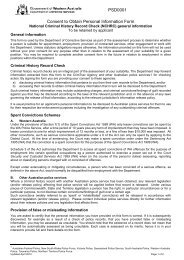

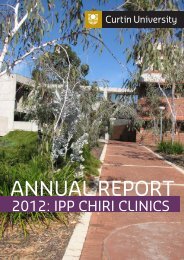
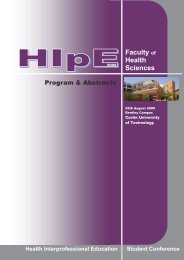

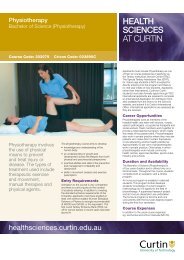
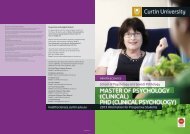



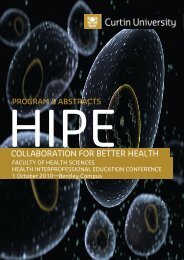

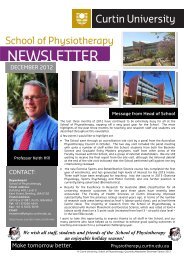
![2007 Annual Report [.pdf] - Health Sciences - Curtin University](https://img.yumpu.com/44476724/1/184x260/2007-annual-report-pdf-health-sciences-curtin-university.jpg?quality=85)